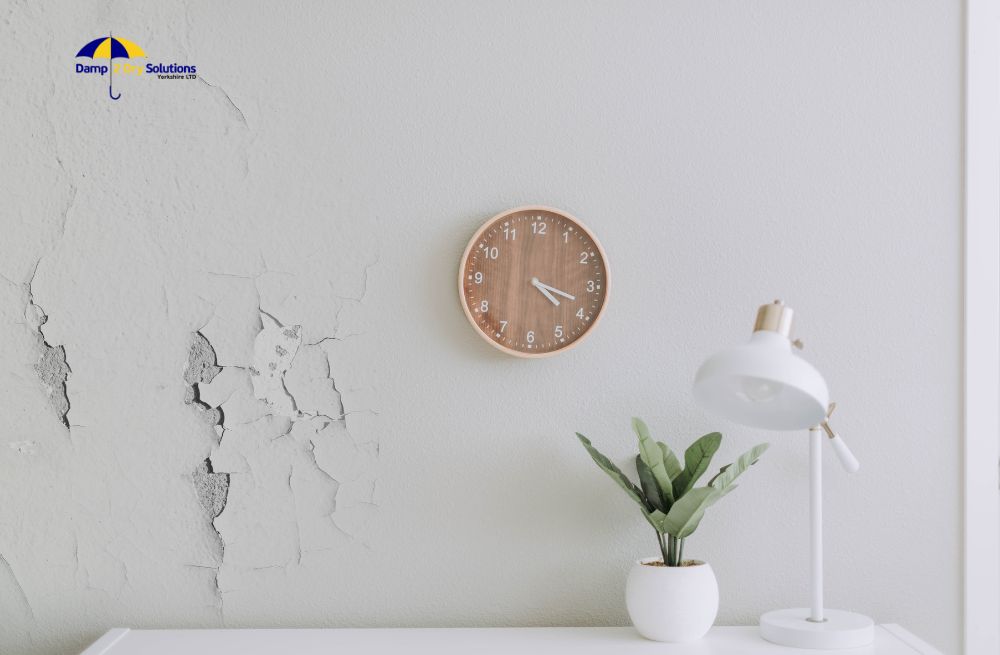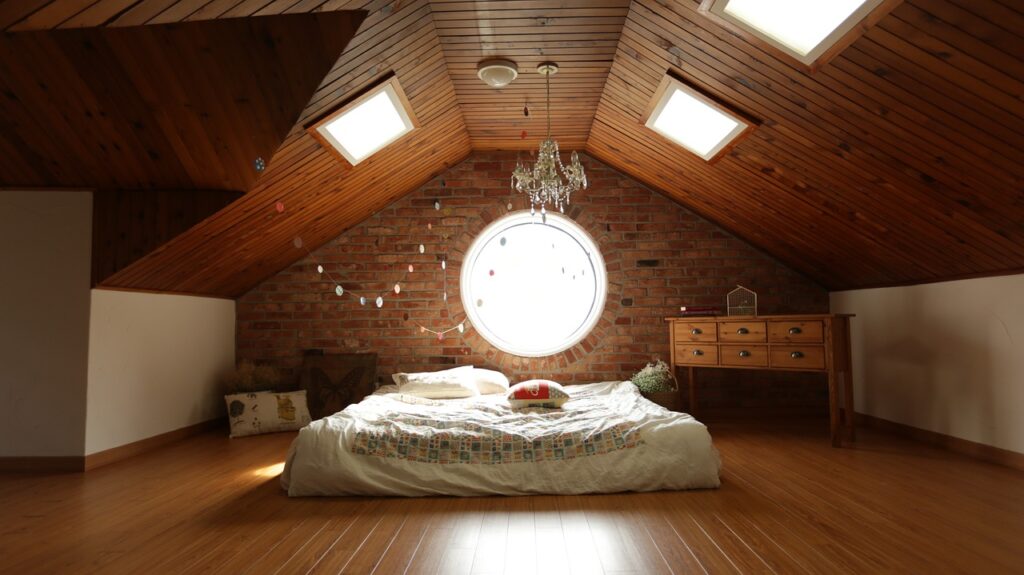Damp problems can develop in any part of the house, but there are some frequent spots where they are more likely to occur. Bathrooms and kitchens, for example, produce a lot of heated moisture. If this is not evacuated, it will condense onto cold surfaces, resulting in condensation.
Condensation causes dampness in bedroom and mould to grow over time, which can be problematic. In comparison to the previous places we discussed, your bedroom does not see as many household activities. We do, however, spend a significant amount of time in our bedrooms sleeping. This means that a lot of moisture has been accumulated as a result of sweating and breathing.
If the warm moisture-laden air in the bedroom is not cleared, it will drop on cold surfaces and cause condensation, just like it does in your bathroom or kitchen.
It is not strange that condensation is the most typical type of dampness problem in your bedroom. However, you must also be mindful of penetrating wet, which is another possible damp concern.
Why is there dampness in my bedroom?
The first thing every home owner should search for is the cause of the damp problem in their bedroom. Finding the source of the dampness in bedroom is the first step toward resolving the problem.
If we narrow down the top reason why their is dampness in bedroom walls then look for cracked mortar, broken top roof tiles, damaged guttering, pipes or lead flashing are common.
What is the source of dampness on bedroom walls?
If there is damp on the bedroom wall, the following are the most likely causes:
Condensation
As previously stated, moisture accumulated through breathing and sweating is the primary cause of condensation in the bedroom. Condensation can take a while to form, and moist patches are less likely to appear. Condensation is likely to result in black mould growing on the ceiling.
If you have black mould, you most likely have a condensation problem. Another indicator of condensation is when your windows begin to steam up. When this occurs, it indicates that the room lacks appropriate ventilation and that excess moisture must be eliminated.
Inadequate maintenance
If there are moist spots on the walls or ceiling of your bedroom, it is very likely that water is infiltrating from the outside. External flaws such as faulty pipes and gaps in roof tiles are only a few of the causes of dampness on a bedroom walls. When you’ve identified the source of the problem, you’ll be able to deal with it.
The flaws we just highlighted can be corrected by yourself, but we recommend that you employ a professional contractor to make any necessary repairs.
If you are having trouble determining where the damp is coming from, please feel free to contact one of our highly skilled damp surveyors. Our surveyors will conduct a survey to accurately determine the type of damp problem impacting your property and will advise you on the next best step to treat the problem.
What is the source of dampness on bedroom walls?
Checking to determine whether you have damp on your bedroom walls is similar to checking for damp on the ceiling. The most prevalent causes of moist walls in your bedroom are condensation and deep damp.
If there is minimal saturation on the wall surfaces but there is black mould, you most likely have a condensation issue. However, if there are damp patches, you may be experiencing from penetrating damp.
One of the most frequent causes of penetrating moisture is the presence of cracked bricks or gaps in the external render. These inspections should be performed by a damp proofing expert to ensure an accurate diagnosis.
Is damp in the bedroom harmful to your health?
As via dream.co.uk, The average person spends about 26 years sleeping in their life. You can think how vital the bedroom is for you. Damp is not dangerous to your health in and of itself; however, prolonged exposure to black mould can be. If you have respiratory problems or have difficulty breathing, this can be medical emergency if not treated promptly.
According to gov.uk, damp and mould mainly affect the lungs and breathing—causing symptoms like coughing, wheezing, and shortness of breath—and in serious cases, they can lead to severe illness or even death, as they also raise the risk of lung infections such as aspergillosis, a condition caused by the Aspergillus fungus.
How to get rid of dampness in bedroom?

How does one get rid of wetness in the bedroom now that we’ve discussed the causes? Obviously, this is dependent on the type of damp. Condensation, for example, can be easily relieved by regularly opening windows to improve air movement.
Also, if your bathroom is adjacent to your bedroom, we suggest turning on your exhaust fans. This will help to remove any extra moisture that may have accumulated in the bedroom.
If your bedroom has penetrating damp, the first step is to locate the cause of the leak or external issue. If you are a skilled contractor, you can make these repairs yourself; otherwise, seek a properly qualified contractor to complete the work.
Here are other ways you can get rid of dampness in bedroom
- Air out your home regularly. use air purifier, Invest in some green plants etc.
- Check your walls for mould and dampness. Find and Fix
- Heat every room of your home with home heating systems.
- When washing or bathing, open the windows or turn on the extraction fan.
- Put the lids on the saucepans and turn on the extraction hood.
- Ventilate your home on a regular basis and leave doors open to allow air to flow – opening your windows for 20 minutes each morning is an excellent place to start.
- After taking a bath or shower, use a wiper to remove the extra moisture off the walls. This can reduce the amount of excess moisture in your bathroom by up to three-quarters.
- Once a year, seal the grout with a regular sealer to prevent moisture from leaking through.
- In the winter, keep furniture away from the walls. Mold will be discouraged by a 15cm space (especially on external walls).
- Leave wardrobe doors slightly ajar. A little airflow keeps mould from forming on cloth.
- Check for wetness around fireplaces. High salt levels from fuel burning can make fireplaces especially susceptible to moisture.
- Do not dry your garments on the radiators. If you must dry items indoors, use an airer in a well-ventilated area.
- Check that your washer and dryer are both externally vented. Otherwise, every time you dry and wash your items, you’ll introduce dampness into your home.
Take these measures to get rid of damp in bedroom.
Read also – What are the ideal humidity levels in the house? and How to Stop Damp in Your Bathroom?

Conclusion
We hope this post has provided you with a clear picture of what causes damp in bedrooms and how to deal with it. As with any form of damp problem, the sooner it is recognised, the better your chances of treating it as as quickly as possible.
You may book a survey or get more information from our staff by calling 07401553791 or contacting Damp2Dry Solutions online.






